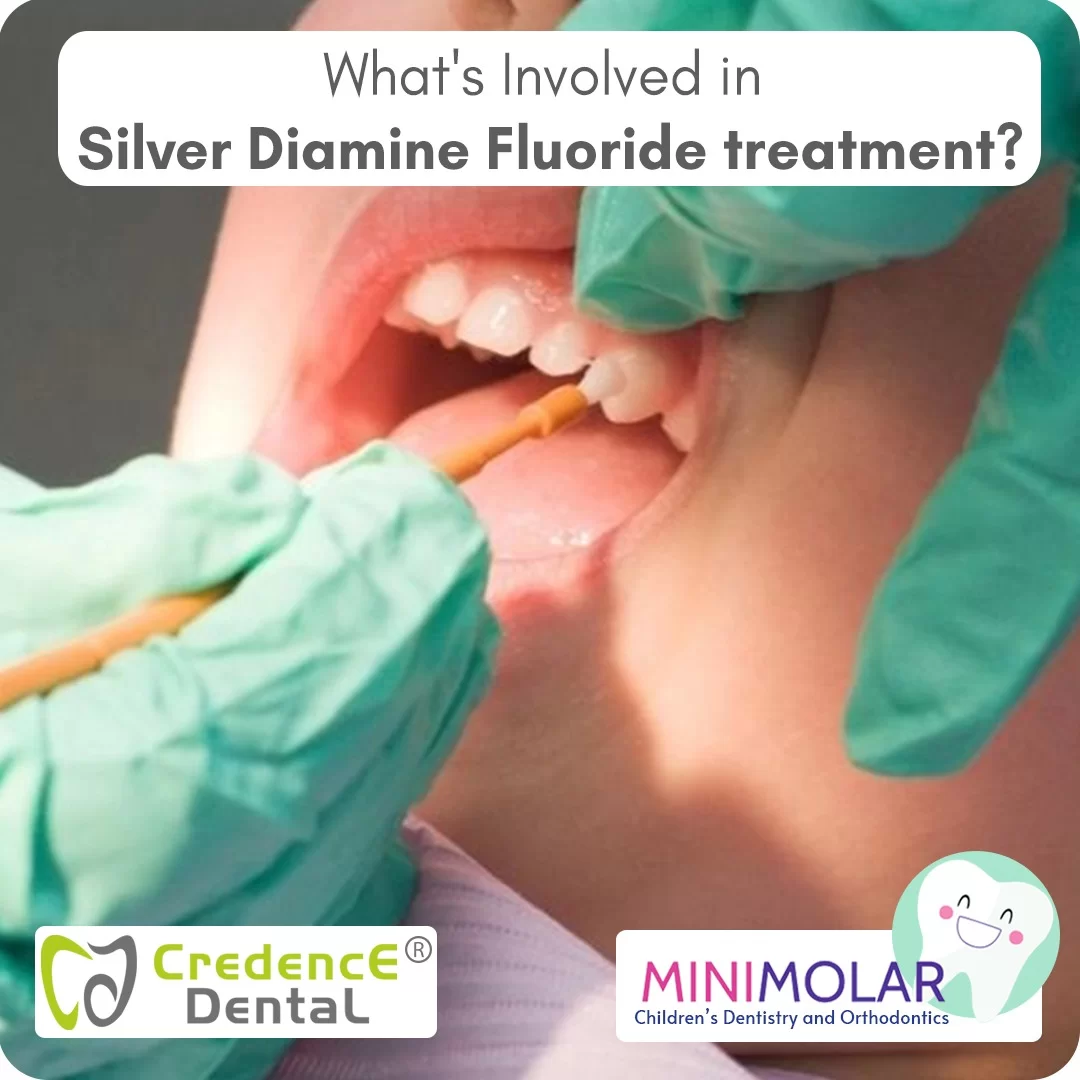Untreated dental cavities in kids are a serious dental problem that is faced by many parents. One in every five children has a problem with dental cavities. While we know the application of dental fluoride is a well-known preventive measure in children, it’s not the choice of treatment when there are deep cavities present.
Untreated dental decay extending in deeper layers of the tooth requires mechanical removal with hand instruments or drills. This lost tooth structure is restored using filling material.
But can we really follow all clinical steps and complete the treatment in uncooperative patients too?
Children with low cooperation levels need noninvasive intervention until a certain age, after which the drill and fill concept can be applied to them. Hence non-invasive interim intervention i.e. no drill concept is necessary for arresting dental cavities. One such intervention which has helped all Pediatric Dentist is the application of Silver Diamine fluoride (SDF)
What is SDF?
SDF is an inexpensive, non-invasive medicament that is applied topically. It is 38% SDF, a silver fluoride with the addition of ammonia. SDF has FDA and drug administration approval and can be used in arresting dental cavities
Is SDF effective?
SDF has been used internationally for decades to arrest caries in primary as well as permanent teeth. SDF is twice the strength of commercially available fluoride varnish hence proving to be effective means of arresting cavities.
Who is the right candidate for the application of SDF?
SDF has its main use in children and adolescents when patients co-operation for dental treatment is limited may be due to young age, situational anxiety, or developmental and intellectual disabilities.
Applying SDF will not restore the form and function of teeth like the traditional filling. It’s just a means to stop the decay process and prevent the child from developing any form of deeper cavities.
If the SDF application is done without a plan for future filing, it could provide a reservoir for exacerbation of the decay process via the food impaction in the cavity and thus increasing the
SDF has clinical utility in children and adolescents when patient cooperation for restorative dentistry is limited due to young age, situational anxiety, or intellectual and developmental disabilities. Application of SDF does not restore form and function to teeth with dental caries as do traditional restorations.
The use of SDF without a plan for restoration of the decayed teeth could provide a reservoir for exacerbation of the caries process via food impaction in cavitated lesions and subsequent metabolism of fermentable carbohydrates to acid by cariogenic bacteria.
Also, if teeth are not restored with appropriate fillings it can lead to disturbance in the child’s bite relationship and jeopardize the space needed for permanent teeth to erupt. Hence the application of SDF IS not a replacement for the filling of a tooth. Rather it is an effective interim therapy that is used as part of a comprehensive treatment plan supervised by a dentist within a dental home.
Side effects of Using SDF?
SDF applied to any dental cavity or any tissue of mouth, lips or skin causes significant black staining due to the presence of Silver oxide. Staining of skin and oral mucosa tends to resolve within a few days as the cells present in the skin slough off. In contrast, any dental cavities treated with SDF remain permanently black which is a significant aesthetic problem, especially in anterior teeth
How does SDF work?
SDF works because Silver and fluoride can stop dental decay. Silver has antibacterial properties which makes it a perfect agent to stop decay. Fluoride increases the rate at which the tooth can be remineralized and it also increases resistance to harmful acids. Also, fluoride has antimicrobial properties
Benefits of SDF
Non-invasive – As treatment just required the application of the solution without drilling
Safe – It’s FDA approved and does not contain harmful agents
Cost-effective – Compared to invasive treatments, the cost of treatment is less
Quick – Treatment can be completed in a short time
SDF vs Drilling
SDF is the best alternative to filling cavities in small children. This is a non-invasive treatment that requires minimum time compared to the time needed for filling. The sound of the drill or its sensation can at times be scary for children and make them dislike dental clinics. So to avoid these factors, it’s always better to use a non-invasive procedure for the start and later move with the invasive part.
Talk with your Pediatric Dentist today for more details on SDF.
Call us or Whatsapp us at +91-9141160212 to book an appointment today! or just drop into our Dental Clinic at RR Nagar in Bangalore


